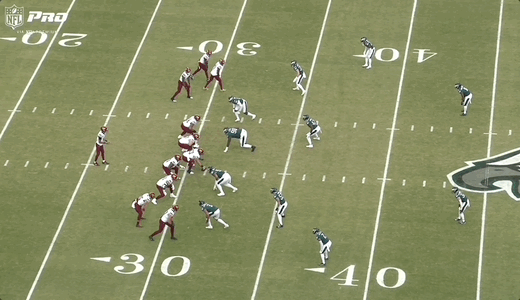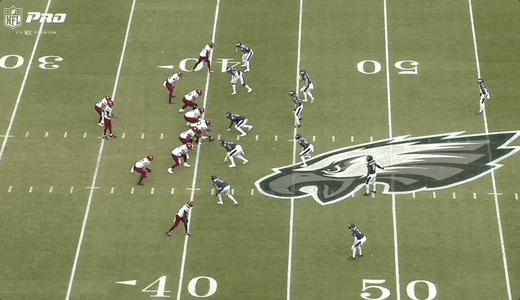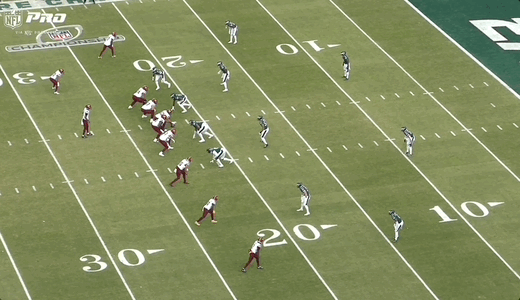Top to bottom, Vic Fangio’s Eagles Defense is a well-coached unit. They’re defined by the way that they keep offenses in front of them. After all, Philadelphia allowed the fewest 20-yard pass plays in the NFL this season.
You might be thinking that this isn’t relevant against a Chiefs offense that doesn’t push the ball downfield very much. Kansas City not only had the 6th-fewest 20-yard pass plays, but they also ranked dead last in the NFL in average air yards per attempt and completion.
What the Chiefs rely on instead is yards after the catch (6th in the NFL in YAC/Completion). But the Eagles’ style of play is built to stop this as well. As a unit, they collectively have their eyes on the quarterback and receivers in front of them, enabling them to pounce once the ball is in the air. And that helps limit those yards after the catch:
The Eagles finished the regular season ranked 3rd in YAC/Completion allowed. You can see why from the above plays.
Fangio’s Approach
As I mentioned yesterday, Fangio’s defense relies heavily on disguising coverage out of 2-shell looks. According to MatchQuarters, they ranked 2nd in frequency of coverage disguise during the regular season.
Whether they end up playing a 2-shell coverage like quarters or quarter-quarter-half (where they ranked 5th and 1st in frequency respectively) or cover-3 (which they played more than any other coverage), offenses typically don’t know what they’ll see until after the snap.
That alone doesn’t lead to good coverage or finishing as the #1 ranked pass defense in the NFL, as the Eagles did this season. But when you combine that disguise with good execution and communication on the fly, you end up with an elite unit.
Below, you can see a great example of this pass defense in action. This was a 3rd-and-9 from their Week 13 win over the Ravens:






